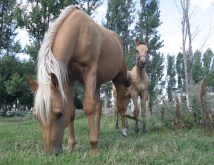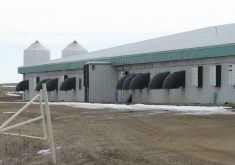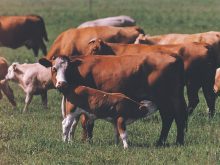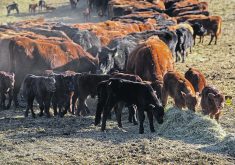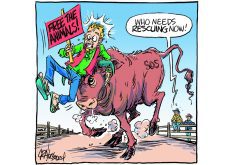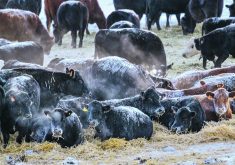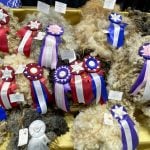Sheep producers can make more intelligent decisions about parasite control when they understand the intricacies of worm life cycles.
Strategic deworming programs result in healthier sheep, improved profits, and if done correctly, the ability to stop deworming.
Sheep harbour many worms in their intestines. Most worms steal nutrients from the food around them, but there is a significant exception.
Haemonchus contortus, also known as the barber pole worm, is a blood-sucking parasite. It is the most economically important worm in sheep because, like others, it causes weight loss and poor health, but it also causes anemia.
Read Also

Beef cattle more prone to trace mineral deficiencies
The trace mineral status of our cows and calves is a significant challenge for western Canadian producers and veterinarians.
A fecal flotation is the easiest way to diagnose worms in sheep. A small manure sample is mixed with a concentrated salt solution and then left to stand. The light eggs float up to the surface of the solution and can be seen under a microscope.
This test allows veterinarians to determine not only if worms are present, but also the severity of the infestation. It does not differentiate between worm species.
The Haemonchus life cycle is similar to that of most intestinal sheep worms. Sheep deposit egg-infested manure on pastures. The eggs hatch and then go through three larval stages before they are ready to infest the next sheep.
As sheep graze, they inadvertently consume larvae attached to grass blades. Once inside a sheep’s intestine, the larvae moult again and mature into adult worms capable of producing eggs.
In favourable weather conditions, the life cycle of sheep intestinal worms is about three weeks. It shortens as temperatures rise and lengthens as days get cooler.
Parasites thrive in warm temperatures and high humidity. Hot, dry and windy conditions kill eggs and larvae on pastures. In May and June, larvae are quick to dry and die unless sheep eat them. This is an important fact to remember when planning a control program.
Intestinal worms alter their life cycles according to the season. At the beginning of summer, the larvae rapidly moult into mature egg-laying adults. To ensure their survival, many larvae halt their development into adult worms at the end of the summer. They burrow through the gut wall and enter a dormant state.
In spring, when ewes start eating grass and lambing and the environment is better suited to worm survival, the larvae complete their maturation into adults and begin laying eggs to be passed in the manure.
The key to controlling worm populations is to limit the number of eggs laid on pasture. The goal of parasite control programs is not to eliminate worms but to reduce the number to a level that minimizes the need for deworming. This is accomplished by deworming the ewes at the right time.
As soon as sheep are released on pasture, they eat larvae that have survived the winter. Ewes should be dewormed after they have been on grass long enough to eat most of the larvae but before those larvae can mature into egg-producing adults.
Ontario’s agriculture ministry suggests deworming all ewes after lambing before they go onto grass and again three to four weeks after going on pasture. As they enter winter stabling, they should be dewormed again with a product that kills dormant parasites.
In the second year of this control program, the producer can forego the pre-grazing deworming. By year three, winter deworming will not be necessary, as long as parasite loads remain low.
The decision on how often to deworm is based on fecal testing. Each July, fresh manure samples are tested for the presence of eggs. Further deworming is not needed if the levels are low, but if the loads are rising, the full program of three dewormings must be reinstated.
This type of program is well suited for mature ewes. Closer monitoring of worm loads is needed in flocks made up of young stock.
Researchers have found another way to evaluate the extent of a Haemonchus infestation. Because Haemonchus causes blood loss, sheep become anemic. This is reflected in the colour of the eyelids. The paler a sheep’s eyelids, the more worms it is carrying.
An eye chart has been created to help producers assess worm loads. It consists of five photographs, each showing a different degree of paleness. Each photo correlates with a specific stage of Haemonchus infestation. The worst stage, the palest, represents life-threatening anemia and a heavy worm infestation.
To learn more about the eye chart, called a FAMACHA chart, go to https://www.wormx.info/


